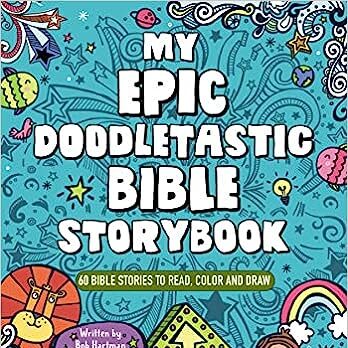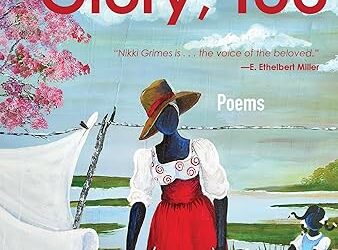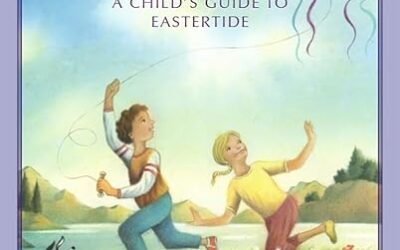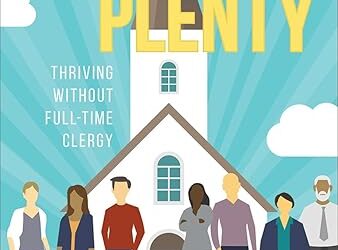As you would expect in a place that houses 7 children and 2 adults, my home is strewn with papers, pencils, crayons, and markers. Under the table, under the couch, between the cushions, shoved into drawers, even in the refrigerator (not sure why, but it happens). There are sticky notes on surfaces, dry erase boards with messages, and every paper/paper-like surface features some sort of doodle. Birds, rabbits, Star Wars characters, favorite foods, how one imagines a sibling to look if that sibling were turned into a chameleon, AND SO MUCH MORE. The doodles are the stories of our lives, a hodgepodge of graffiti that tells what we’re thinking and how we’re feeling. As a teacher, I see doodles on notes, tests, essays, book covers, hands, and sneakers. As a wife, I see doodles of bookshelves, wood racks, and HVAC schema. Doodles are functional. Doodles are expressive. Doodles are informative. Imagine my pleasure when My Epic Doodletastic Bible Storybook by Bob Hartman and Gareth Williams arrived on my doorstep from the pleasure. Finally! A book that can channel some of those doodles into one volume and not be dropped into the crack between the driver’s seat of my van and the console.
My Epic Doodletastic Bible Storybook contains sixty stories from both the Old and New Testaments. The titles use everyday language, as do the stories. The text is interspersed with doodles that the reader is invited to color as they see fit. There is space in the margins for the reader to add their own comments and doodles, allowing them to customize this. Traditional views of gender and marriage are expressed where the stories discuss such. My own children, who are white, would have little difficulty seeing themselves represented in the illustrations, but the children that I am honored to work with in my inner city ministry context would be challenged to see a good representation of hairstyles and other features in ways that reflect their own families. The stories are familiar, themes are highlighted, and questions to help the reader gauge understanding and examine topics more deeply are peppered throughout.
This resource has several possibilities for your ministry! A few copies, along with colored pencils that have various skin tones, would be fabulous additions to pew baskets. Pop a sticky note tag on the day’s Scripture reading and leave it for the children to find. Snap photos of the kids’ colorings, added doodles, and comments and create a slide show that you show before worship. (Or you could use them to create a digital bulletin board on social media.) This could be a good choice to use as the spine for a semester-long faith formation class for late elementary aged students. Use the readings for a group lesson and then break into small groups to examine the questions and do deeper dives into the stories (ie. exploring what they wonder and creating their own additions to the text as graphic representation). This could be an intriguing choice to use in a multigenerational setting; choose a piece of Scripture to explore together using various versions of the Bible. Have the people pull out what is similar in the versions, what is different, and then do a deeper dive to find out why they are different. Maybe even have people explore which version they prefer and why. Wouldn’t it be interesting to see which versions people gravitate towards (and if they follow generational patterns)? This resource is worth a gander!





0 Comments